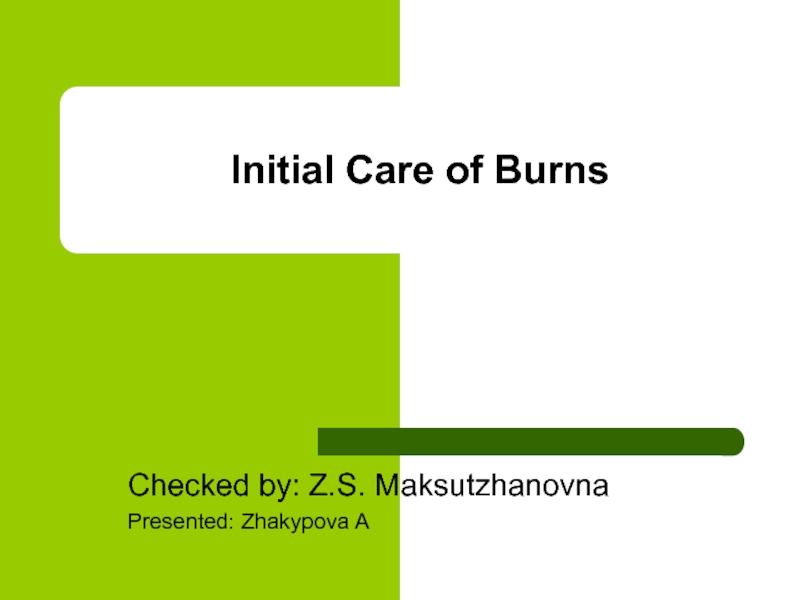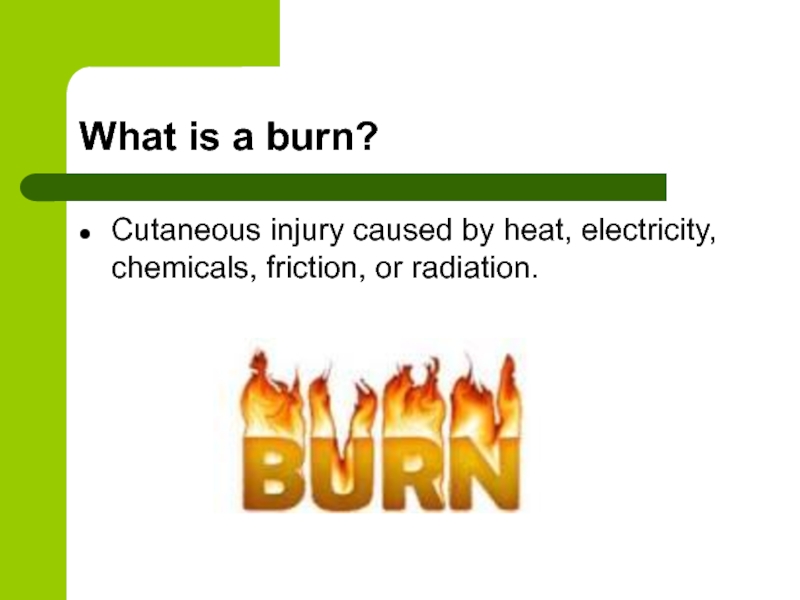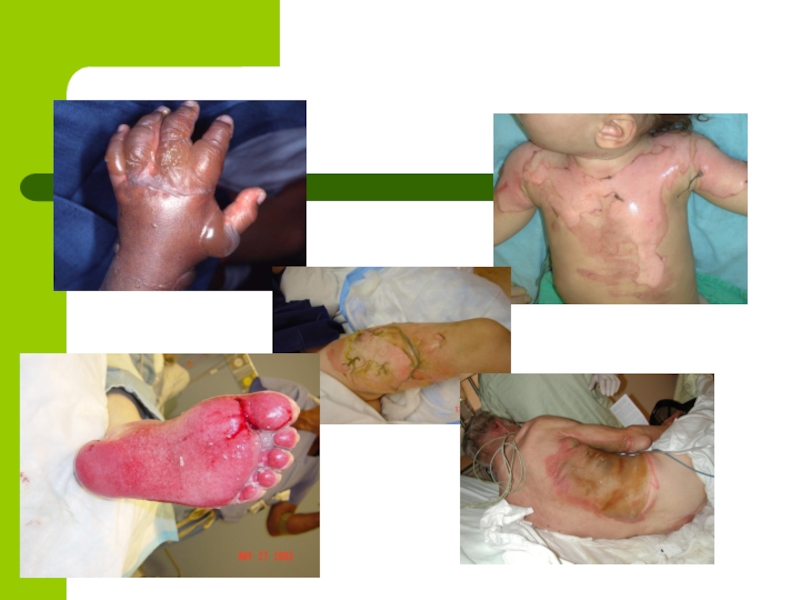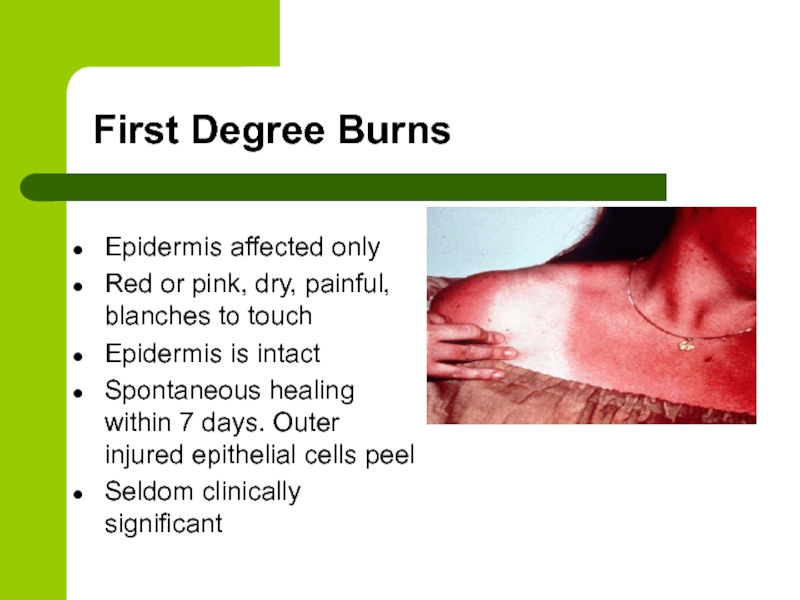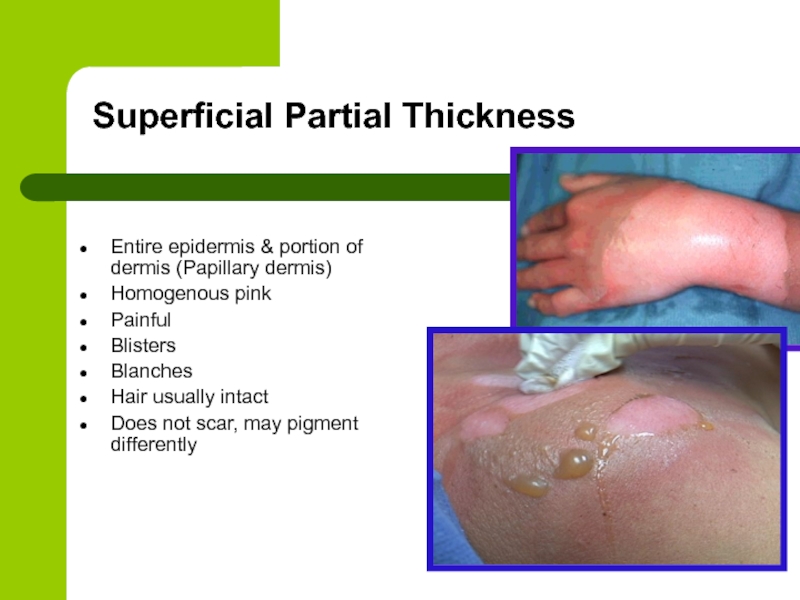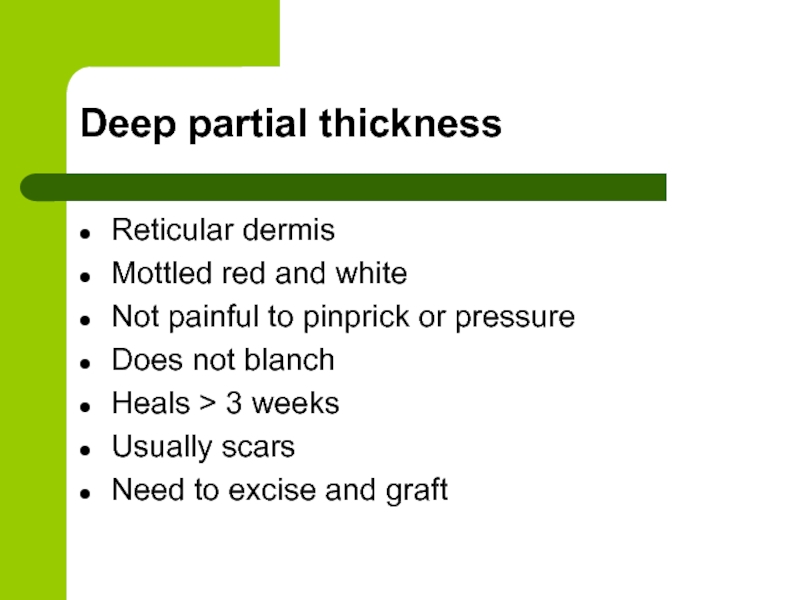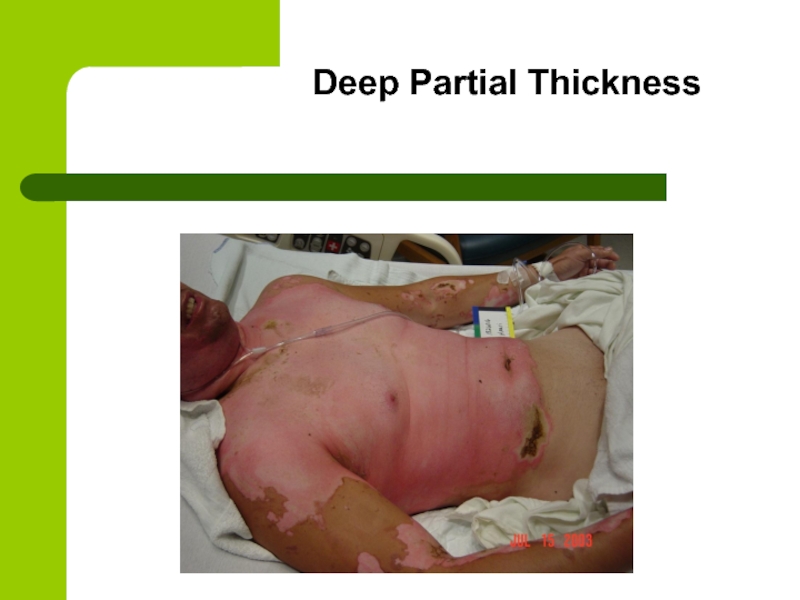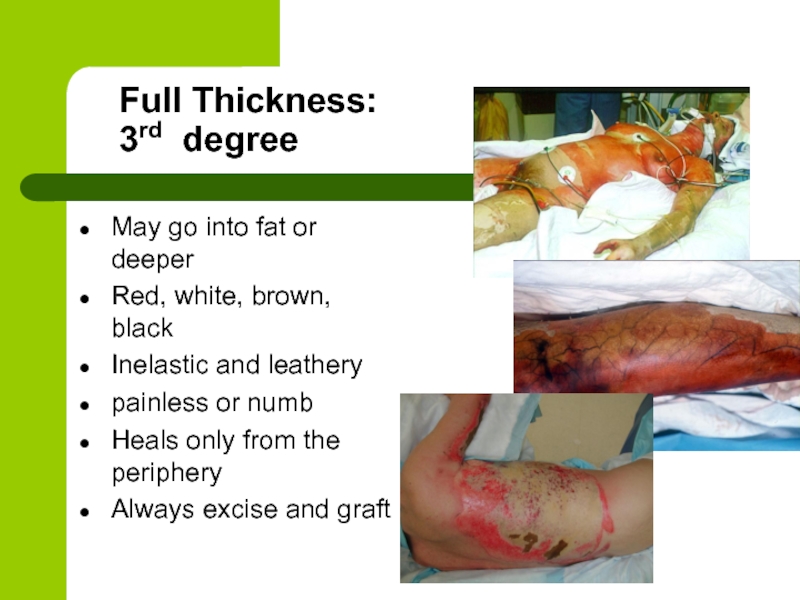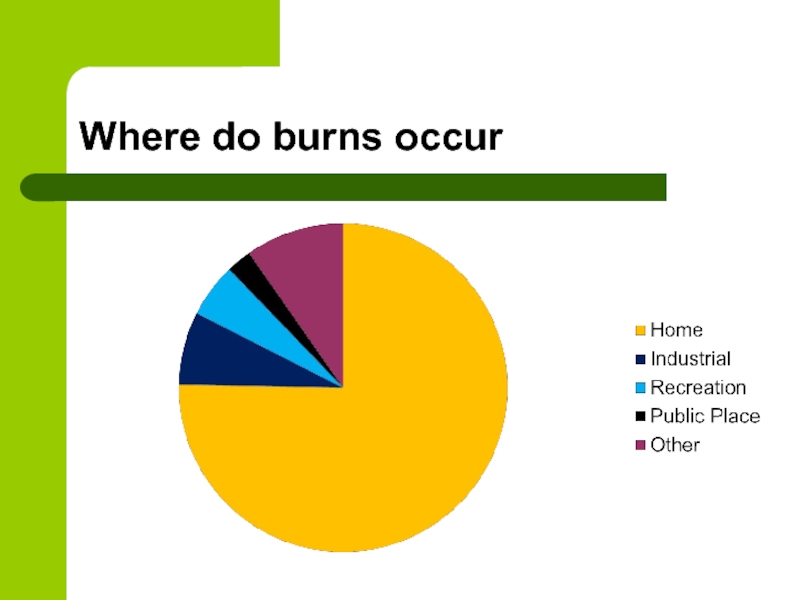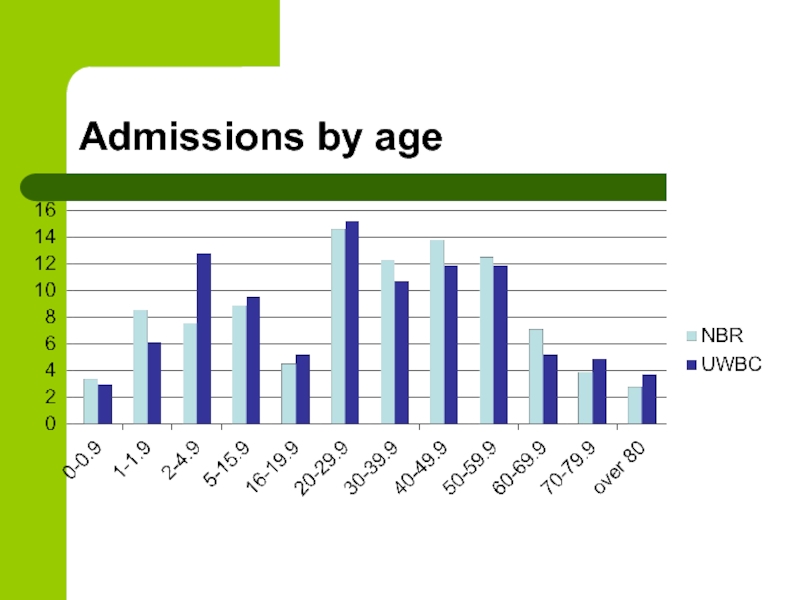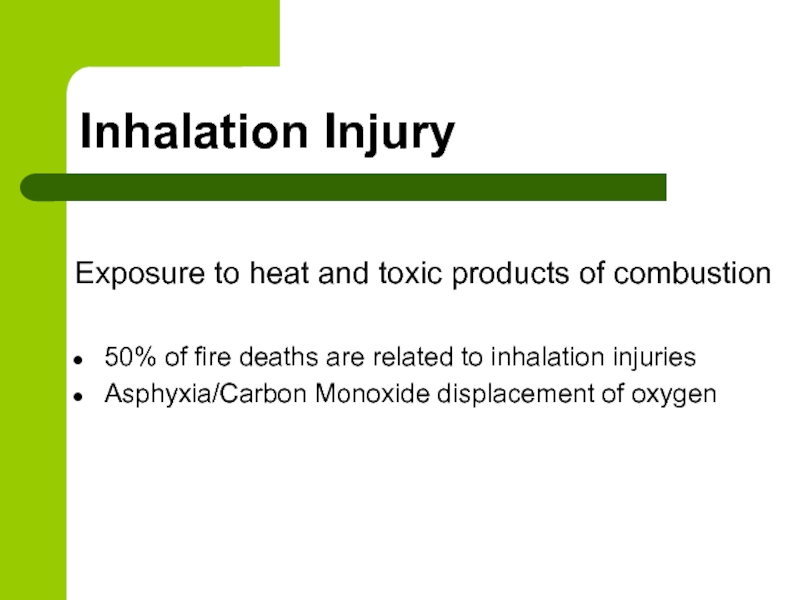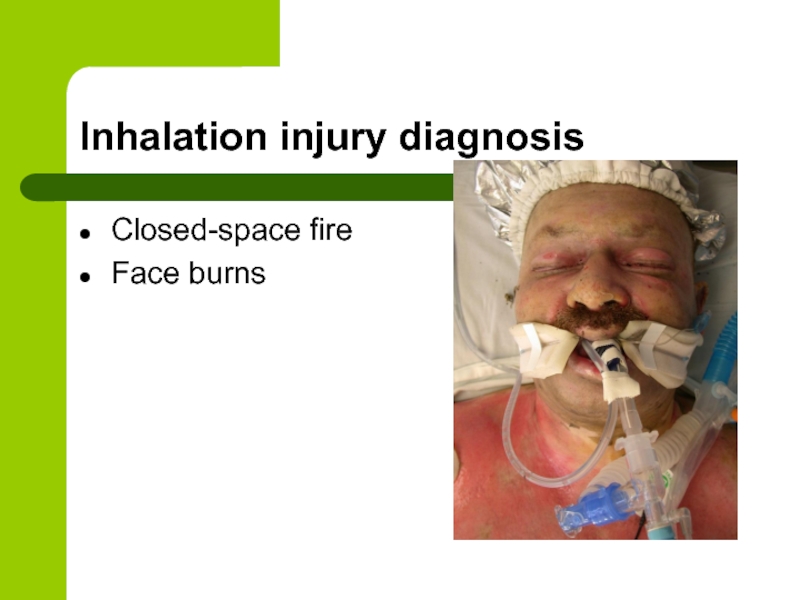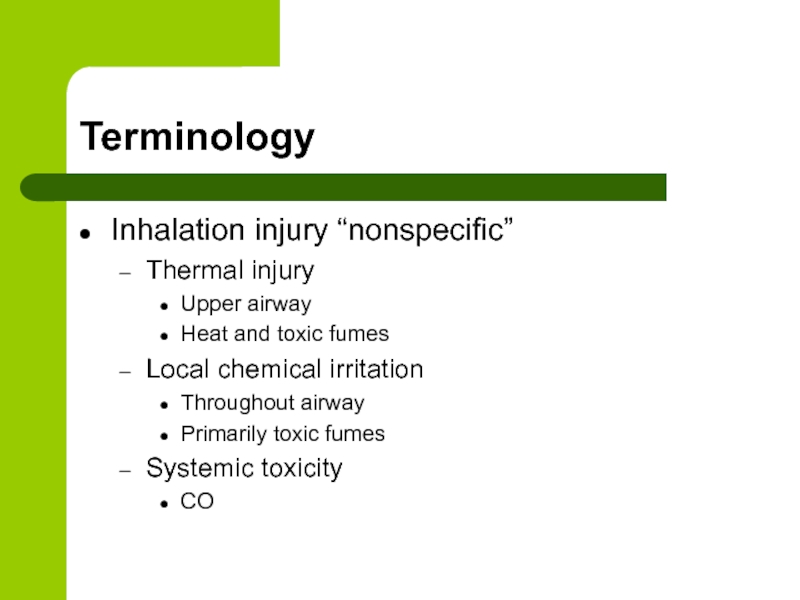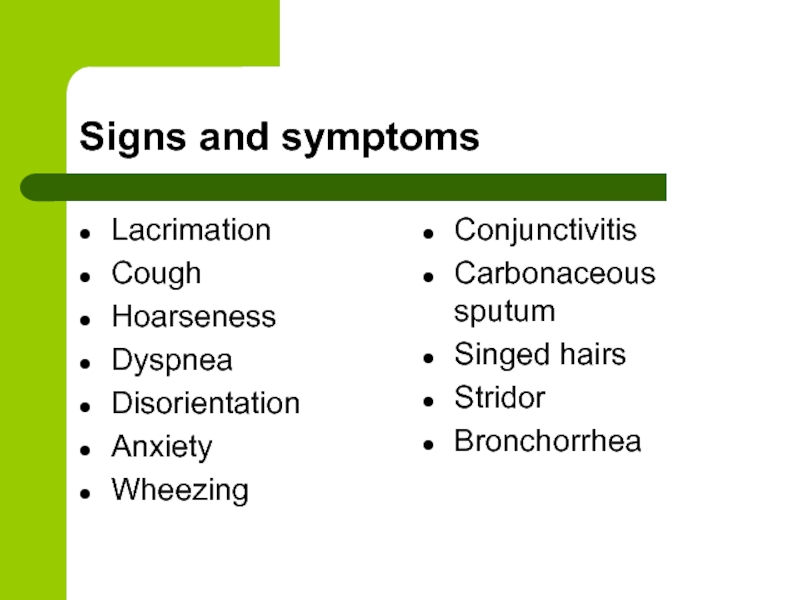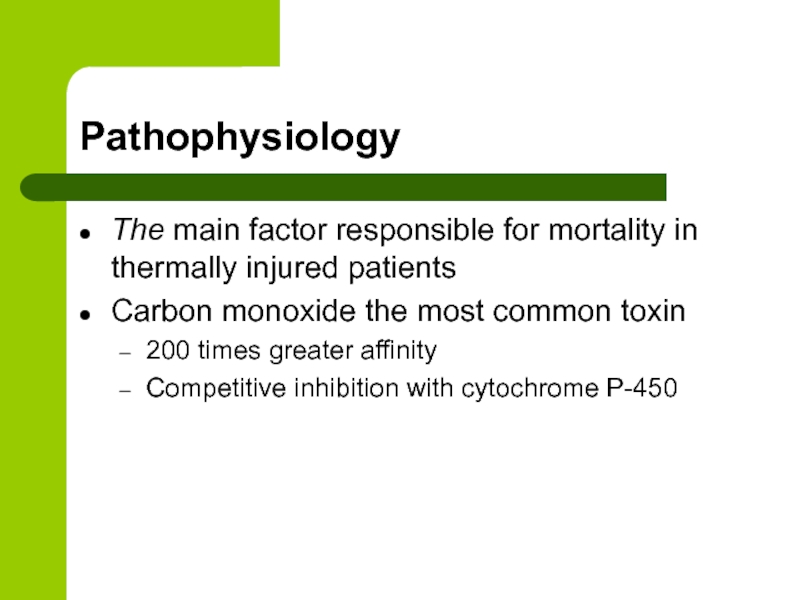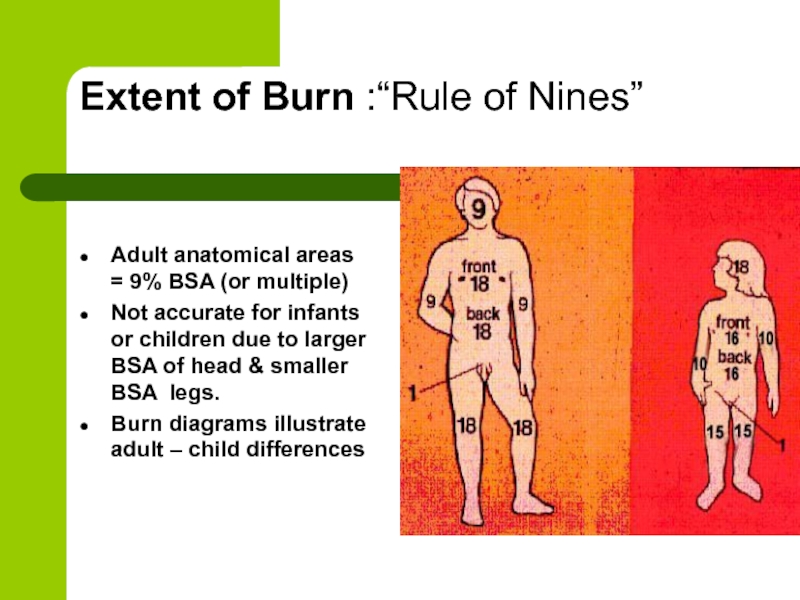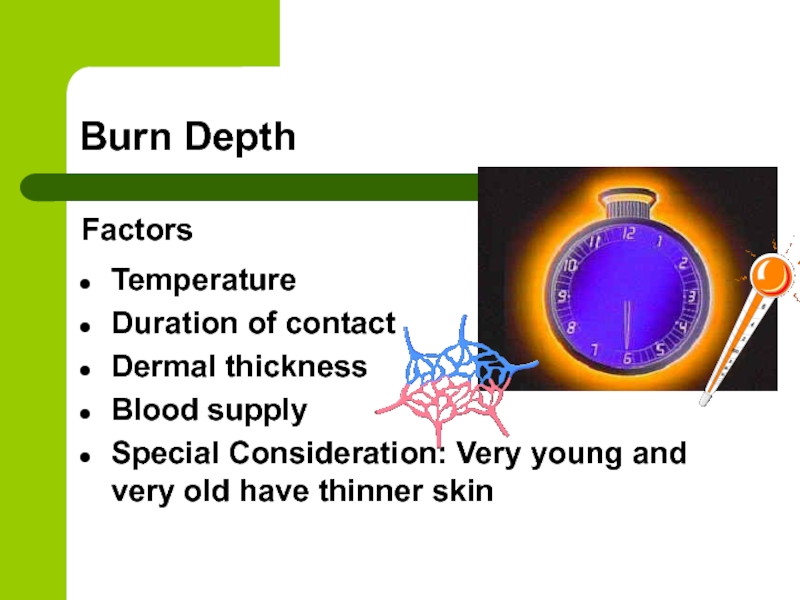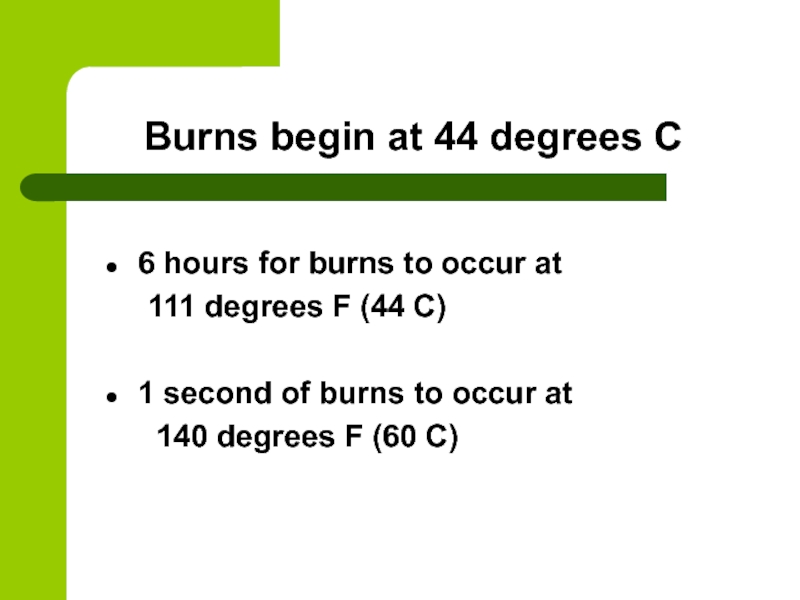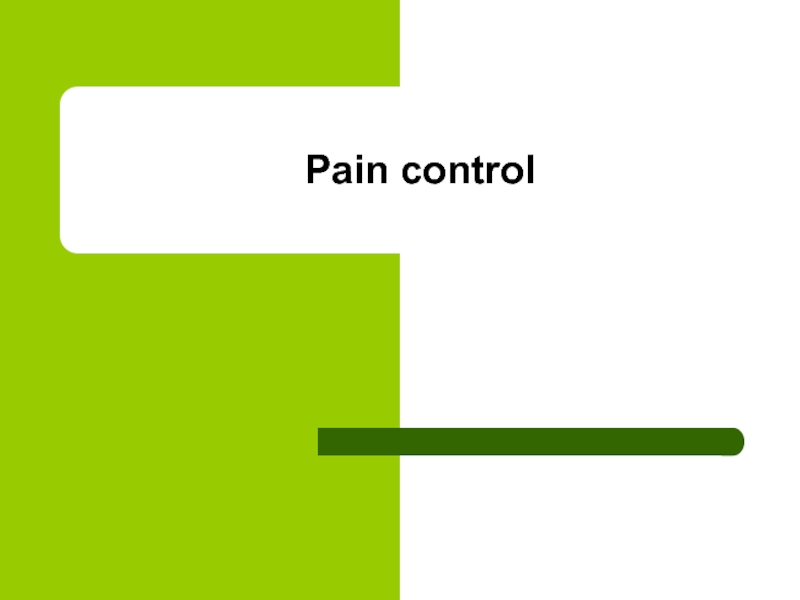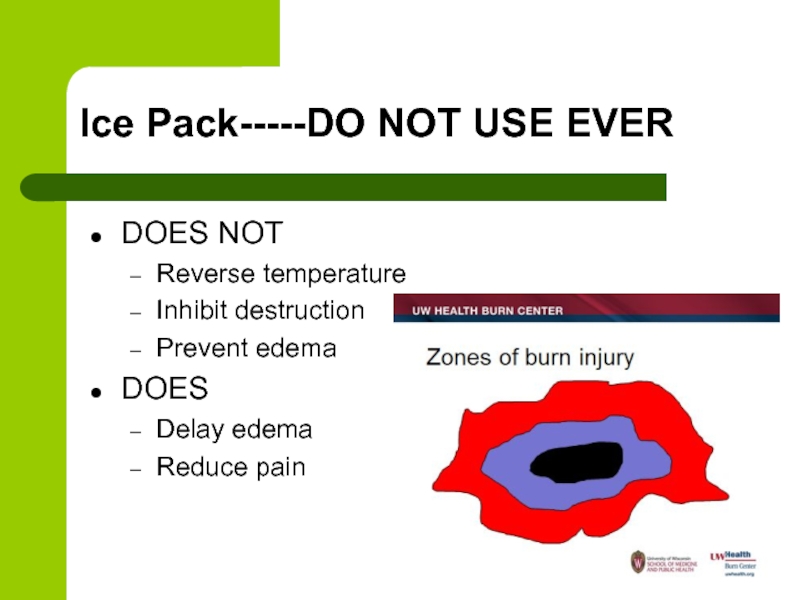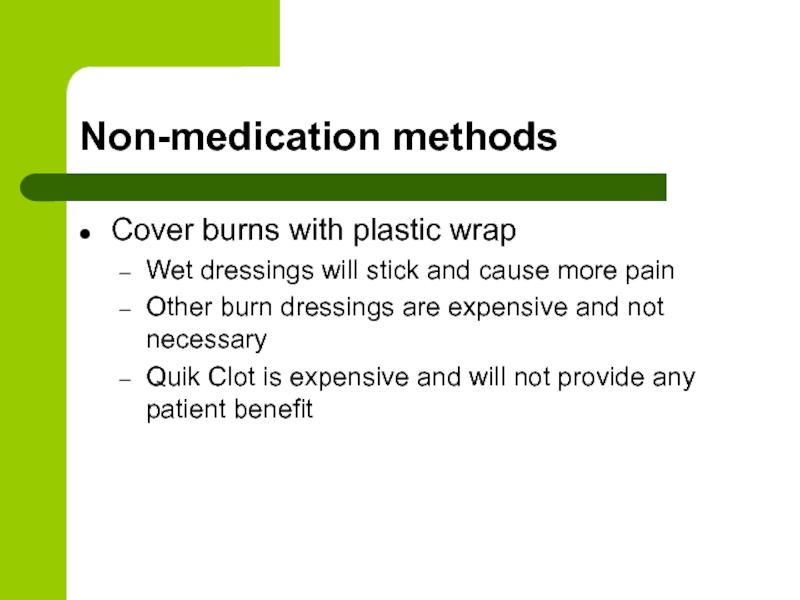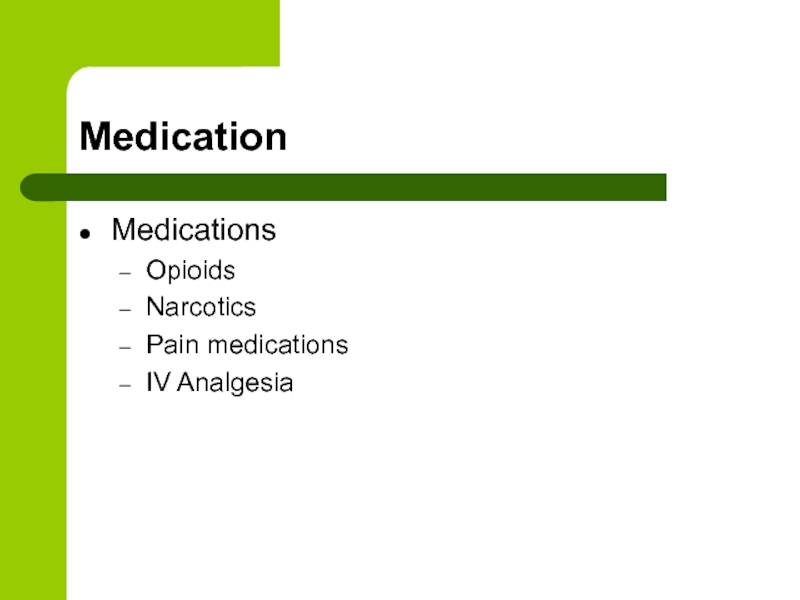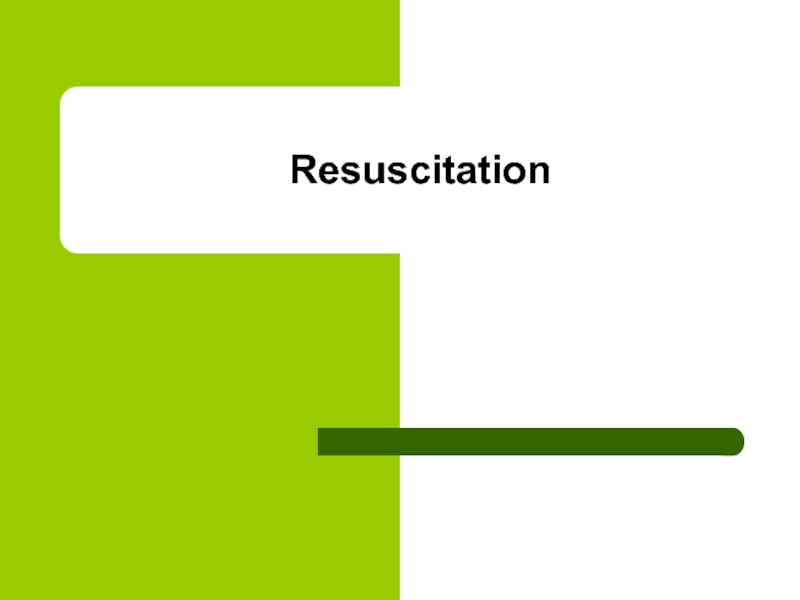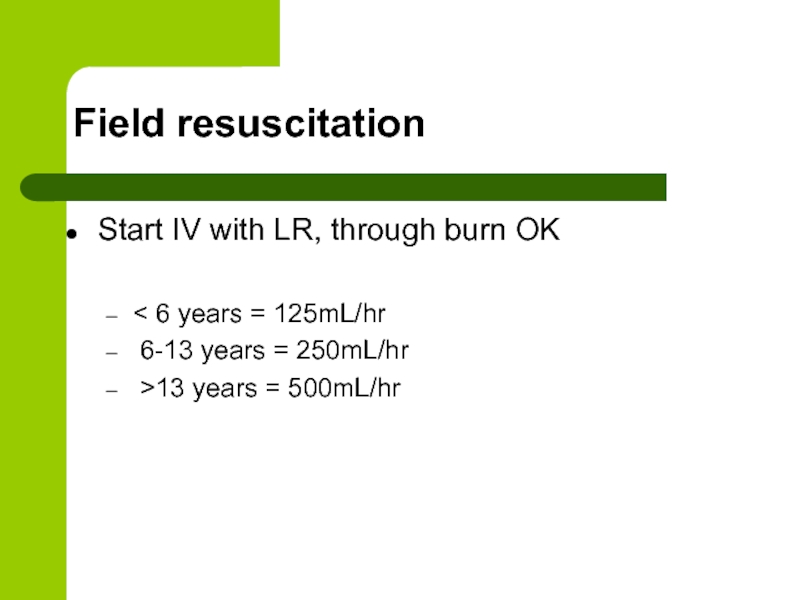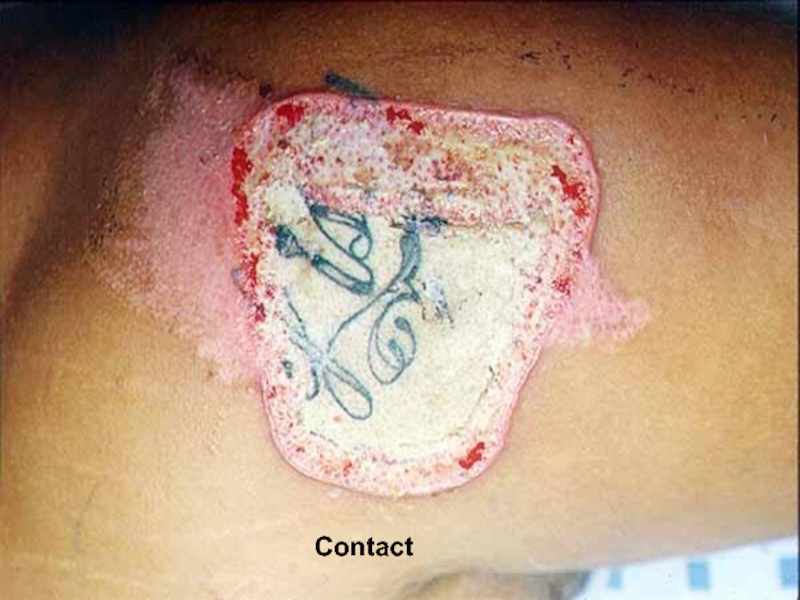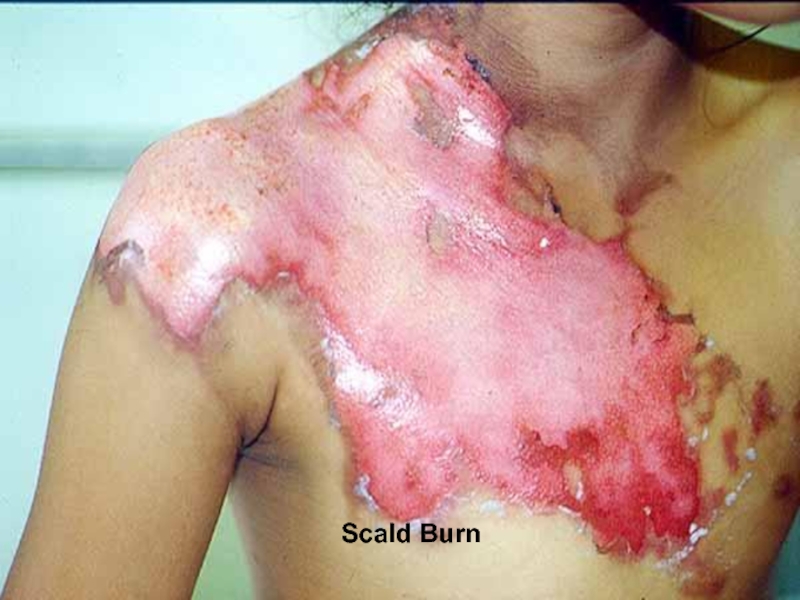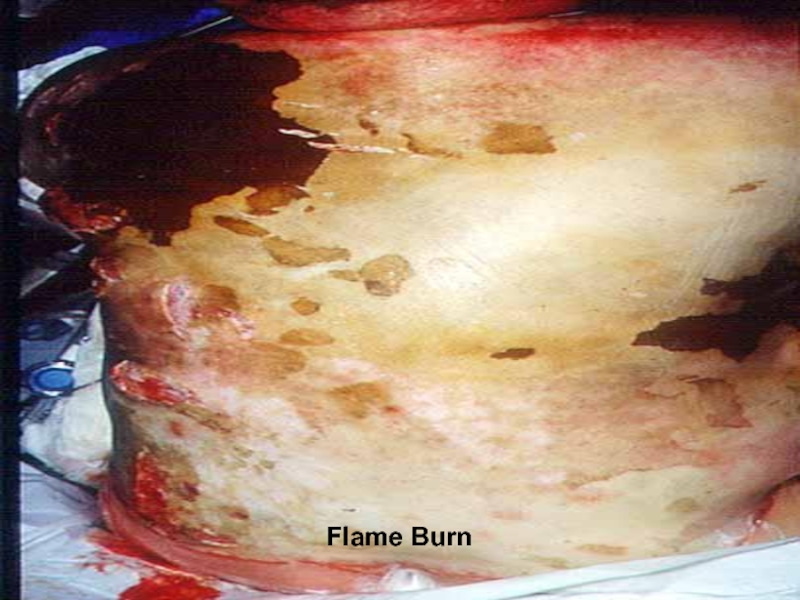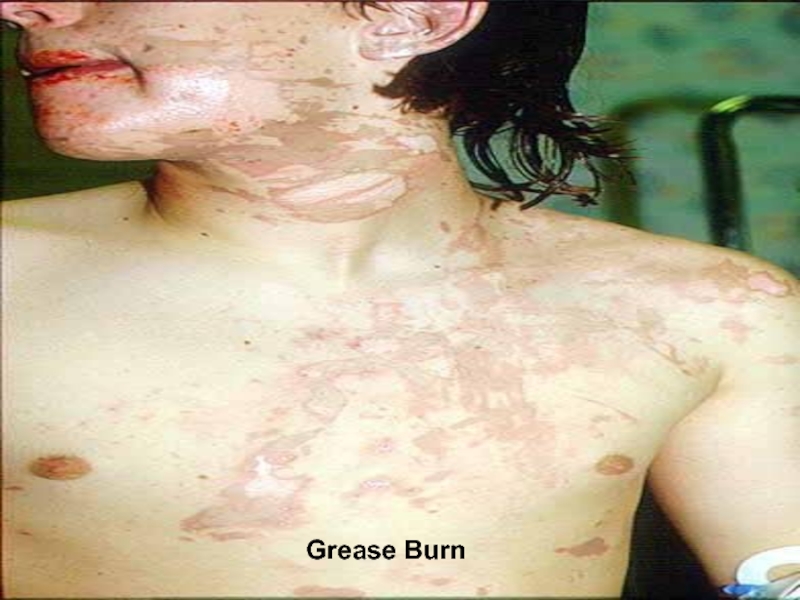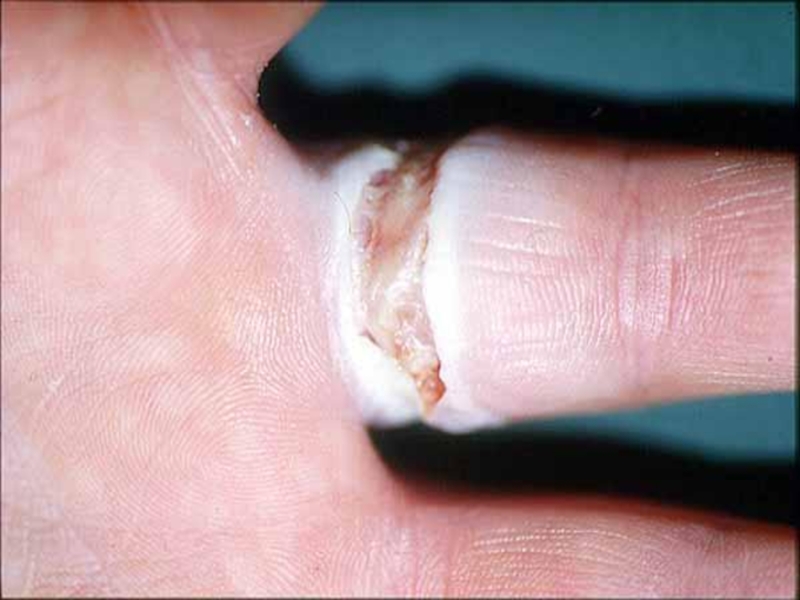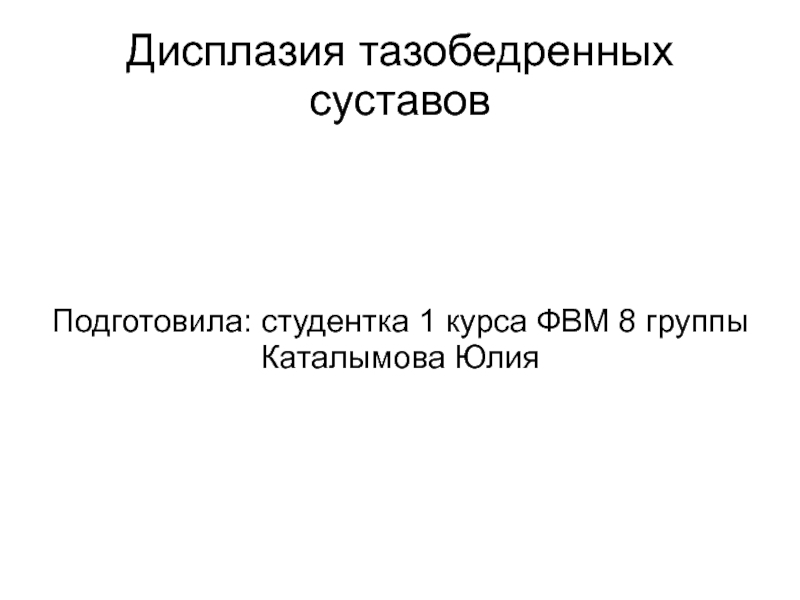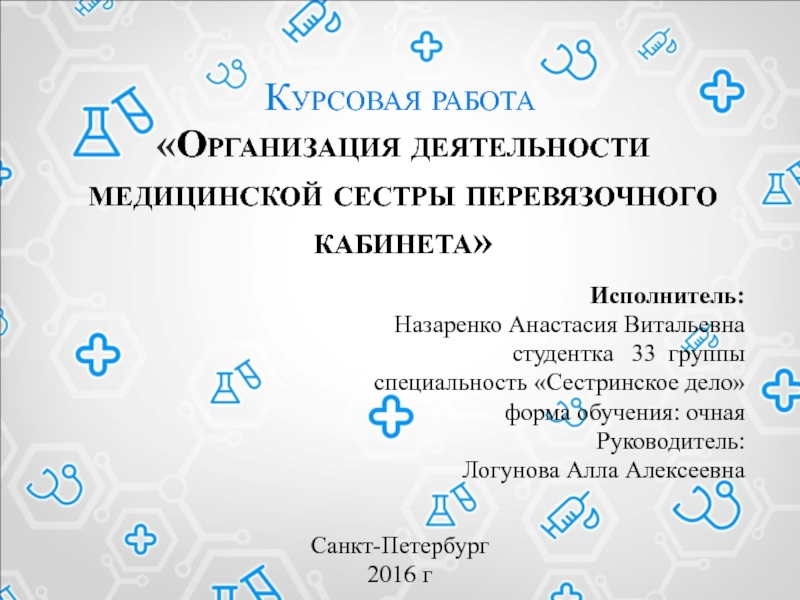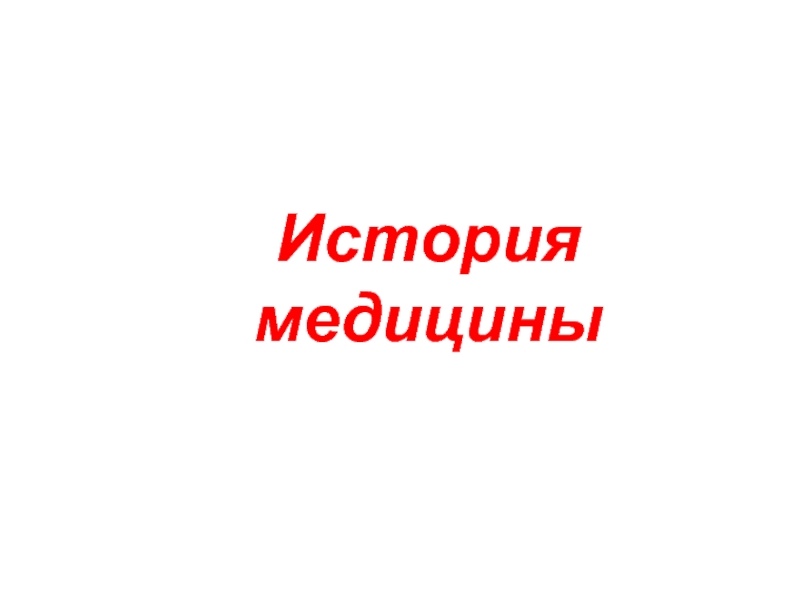- Главная
- Разное
- Дизайн
- Бизнес и предпринимательство
- Аналитика
- Образование
- Развлечения
- Красота и здоровье
- Финансы
- Государство
- Путешествия
- Спорт
- Недвижимость
- Армия
- Графика
- Культурология
- Еда и кулинария
- Лингвистика
- Английский язык
- Астрономия
- Алгебра
- Биология
- География
- Детские презентации
- Информатика
- История
- Литература
- Маркетинг
- Математика
- Медицина
- Менеджмент
- Музыка
- МХК
- Немецкий язык
- ОБЖ
- Обществознание
- Окружающий мир
- Педагогика
- Русский язык
- Технология
- Физика
- Философия
- Химия
- Шаблоны, картинки для презентаций
- Экология
- Экономика
- Юриспруденция
Initial Care of Burns презентация
Содержание
- 1. Initial Care of Burns
- 2. What is a burn? Cutaneous injury caused by heat, electricity, chemicals, friction, or radiation.
- 3. Burn Depth
- 4. First Degree Burns Epidermis affected only Red
- 5. Superficial Partial Thickness Entire epidermis
- 6. Deep partial thickness Reticular dermis Mottled red
- 7. Deep Partial Thickness x
- 8. Full Thickness: 3rd degree May go
- 9. Etiology
- 10. Types of burns
- 11. Circumstances of injury
- 12. Where do burns occur
- 13. Admissions by age
- 14. Inhalation Injury Exposure to heat and
- 15. Inhalation injury diagnosis Closed-space fire Face burns
- 16. Terminology Inhalation injury “nonspecific” Thermal injury Upper
- 17. Signs and symptoms Lacrimation Cough Hoarseness Dyspnea
- 18. Pathophysiology The main factor responsible for mortality
- 19. Determine Burn Severity % BSA involved Depth
- 20. Burn Extent Total Body Surface Area
- 21. Extent of Burn :“Rule of Nines”
- 22. Burn Depth Factors Temperature Duration of contact
- 23. Burns begin at 44 degrees C 6
- 24. Pain control
- 25. Ice Pack-----DO NOT USE EVER DOES NOT
- 26. Non-medication methods Cover burns with plastic wrap
- 27. Medication Medications Opioids Narcotics Pain medications IV Analgesia
- 28. Resuscitation
- 29. IV access < 15% TBSA – oral
- 30. Field resuscitation Start IV with LR, through
- 31. Contact
- 32. Contact Burn
- 33. Scald Burn
- 34. Flame Burn
- 35. Grease Burn
Слайд 2What is a burn?
Cutaneous injury caused by heat, electricity, chemicals, friction,
or radiation.
Слайд 4First Degree Burns
Epidermis affected only
Red or pink, dry, painful, blanches to
touch
Epidermis is intact
Spontaneous healing within 7 days. Outer injured epithelial cells peel
Seldom clinically significant
Epidermis is intact
Spontaneous healing within 7 days. Outer injured epithelial cells peel
Seldom clinically significant
Слайд 5Superficial Partial Thickness
Entire epidermis & portion of dermis (Papillary dermis)
Homogenous pink
Painful
Blisters
Blanches
Hair
usually intact
Does not scar, may pigment differently
Does not scar, may pigment differently
Слайд 6Deep partial thickness
Reticular dermis
Mottled red and white
Not painful to pinprick or
pressure
Does not blanch
Heals > 3 weeks
Usually scars
Need to excise and graft
Does not blanch
Heals > 3 weeks
Usually scars
Need to excise and graft
Слайд 8Full Thickness:
3rd degree
May go into fat or deeper
Red, white, brown,
black
Inelastic and leathery
painless or numb
Heals only from the periphery
Always excise and graft
Inelastic and leathery
painless or numb
Heals only from the periphery
Always excise and graft
Слайд 14Inhalation Injury
Exposure to heat and toxic products of combustion
50% of fire
deaths are related to inhalation injuries
Asphyxia/Carbon Monoxide displacement of oxygen
Asphyxia/Carbon Monoxide displacement of oxygen
Слайд 16Terminology
Inhalation injury “nonspecific”
Thermal injury
Upper airway
Heat and toxic fumes
Local chemical irritation
Throughout airway
Primarily
toxic fumes
Systemic toxicity
CO
Systemic toxicity
CO
Слайд 17Signs and symptoms
Lacrimation
Cough
Hoarseness
Dyspnea
Disorientation
Anxiety
Wheezing
Conjunctivitis
Carbonaceous sputum
Singed hairs
Stridor
Bronchorrhea
Слайд 18Pathophysiology
The main factor responsible for mortality in thermally injured patients
Carbon monoxide
the most common toxin
200 times greater affinity
Competitive inhibition with cytochrome P-450
200 times greater affinity
Competitive inhibition with cytochrome P-450
Слайд 19Determine Burn Severity
% BSA involved
Depth of injury
Age
Associated/pre-existing disease or illness
Burns to
face, hands, genitalia
xx
Слайд 20Burn Extent
Total Body Surface Area (TBSA)?
Rule of nines
Lund and Browder chart
Patients
palm = about 1% TBSA
Слайд 21Extent of Burn :“Rule of Nines”
Adult anatomical areas = 9% BSA
(or multiple)
Not accurate for infants or children due to larger BSA of head & smaller BSA legs.
Burn diagrams illustrate adult – child differences
Not accurate for infants or children due to larger BSA of head & smaller BSA legs.
Burn diagrams illustrate adult – child differences
Слайд 22Burn Depth
Factors
Temperature
Duration of contact
Dermal thickness
Blood supply
Special Consideration: Very young and very
old have thinner skin
Слайд 23Burns begin at 44 degrees C
6 hours for burns to occur
at
111 degrees F (44 C)
1 second of burns to occur at
140 degrees F (60 C)
111 degrees F (44 C)
1 second of burns to occur at
140 degrees F (60 C)
Слайд 25Ice Pack-----DO NOT USE EVER
DOES NOT
Reverse temperature
Inhibit destruction
Prevent edema
DOES
Delay edema
Reduce pain
Слайд 26Non-medication methods
Cover burns with plastic wrap
Wet dressings will stick and cause
more pain
Other burn dressings are expensive and not necessary
Quik Clot is expensive and will not provide any patient benefit
Other burn dressings are expensive and not necessary
Quik Clot is expensive and will not provide any patient benefit
Слайд 29IV access
< 15% TBSA – oral resuscitation
15 – 40% TBSA –
one large bore IV
> 40% -- two large bore IV’s
IV’s should be in the upper extremities
Suture IV’s started through burns
> 40% -- two large bore IV’s
IV’s should be in the upper extremities
Suture IV’s started through burns
Слайд 30Field resuscitation
Start IV with LR, through burn OK
< 6 years =
125mL/hr
6-13 years = 250mL/hr
>13 years = 500mL/hr
6-13 years = 250mL/hr
>13 years = 500mL/hr
